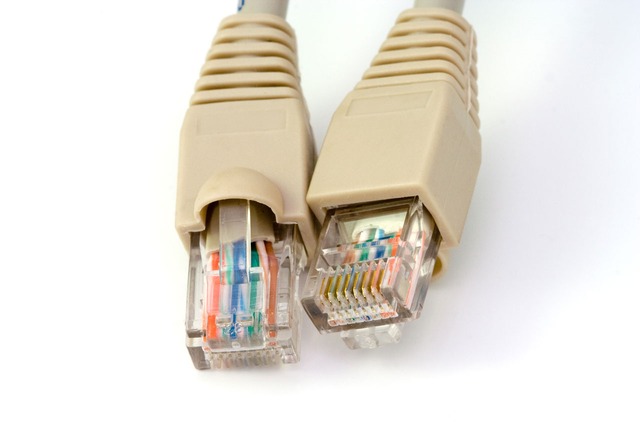Better Broadband: How Your Library Can Take Advantage of E-Rate Funds

Think about the utilities you have at your library: electricity, water, and gas. Could your library survive without those? Probably not. Now, consider your programming and public access technology. How much of it relies on Internet connectivity? How much more could you be doing with better Internet connectivity?
The FCC’s E-rate program connects the U.S.’s schools and libraries to broadband. In a survey of E-rate recipients, the FCC learned that nearly half of respondents reported lower speed Internet connectivity than the average American home – even though on average libraries have nearly 200 times as many users1. To expand broadband capacity, the FCC adopted the E-rate Modernization Order on July 11, 2014.
In order for a modern library to be successful, it must have high-capacity broadband. But to take advantage of this new phase of the E-rate program, libraries actually need to apply. Use the following programs and resources to help your library get the broadband it deserves.
A LEAP toward Better Broadband
The American Library Association (ALA) and the Chief Officers of State Library Agencies (COSLA) started the Library E-rate Assessment Planning (LEAP) project to develop strategies to increase broadband capacity in libraries. The two-year initiative will target libraries in five pilot states: Alaska, California, Iowa, Kentucky, and North Dakota.
This pilot program will help state-level entities provide technical support and develop best practices to assist E-rate applicants so they can fully participate in and benefit from the FCC’s program. The Universal Service Administrative Company (USAC), which administers the E-rate program, helped ALA and COSLA identify the gaps in services to libraries.
Marijke Visser, associate director of the ALA Office for Information Technology Policy, said that the USAC will work closely with the LEAP Advisory Group to develop state strategies that can be scaled to benefit libraries throughout the nation2.
A Crowdsourced E-Rate Website for Libraries
If your library isn’t in one of the pilot states, there’s still help available to you. The ALA E-Rate Task Force (ERTF) wants to ensure that all libraries have the information they need to take advantage of E-rate so they came up with the Library E-Rate Clearinghouse3. This website will aggregate and crowdsource resources to assist libraries in understanding broadband planning and E-rate funding.
The goal of the Clearinghouse is to establish best practices and be a trusted resource for those just starting to explore the world of E-rate. Library staff will also have the opportunity to share their resources and advice to the greater community by way of the Clearinghouse.
An Opportunity for Tribal Libraries
According to the Whitehouse’s Broadband Opportunity Council Report and Recommendations, broadband deployment and adoption in Tribal Lands is well below national averages. And broadband speeds of at least 25 Mbps (download) and at least 3 Mbps (upload) are available to only 37 percent of people living on Tribal Lands. For context, 92 percent of urban households have access to these broadband speeds4. Clearly, there’s an opportunity for tribal libraries to take advantage of E-rate funding and build up the broadband capacity of their communities.
But according to the Association of Tribal Archives, Libraries, and Museum’s (ATALM) Digital Inclusion in Native Communities report, only 15 percent of tribal libraries it surveyed had received E-Rate discounts in 2013. The report suggests that this low number can be attributed to “complicated eligibility requirements and a general lack of awareness” and that prior to 2013 “information about E-rate had never been disseminated specifically to tribal libraries.” But the libraries that did receive E-rate funding stated that “it makes a significant contribution to digital access and opportunities in Native communities.”5.
The ATALM has made equitable access to E-Rate funding a priority and encourages tribal libraries to reach out if they need assistance with the applications. Like libraries in rural and urban areas tribal libraries rely on Internet access to provide essential services to their patrons.
As Marijke Visser writes in American Libraries Magazine, Internet access is no longer optional for today’s libraries. “Without it, many library services grind to a halt and our patrons are left without access to the resources they need for education, employment, entrepreneurship, individual empowerment.” RESOURCES
[1] “Universal Service Program for Schools and Libraries (E-Rate).” Federal Communications Commission. Accessed November 11, 2015. https://www.fcc.gov/e-rate-update.
[2] “ALA, COSLA Help Libraries LEAP Ahead and Increase Broadband Capacity.” American Library Association. Accessed November 11, 2015. http://www.ala.org/news/press-releases/2015/10/ala-cosla-help-libraries-leap-ahead-and-increase-broadband-capacity.
[3] Visser, Marijke. “Broadband Is Coming-Is Your Library Ready?” American Libraries Magazine, November 9, 2015. Accessed November 11, 2015. http://americanlibrariesmagazine.org/blogs/the-scoop/e-rate-broadband-is-coming-is-your-library-ready/.
[4] “Broadband Opportunity Council Report and Recommendations.” U.S. Department of Commerce and U.S. Department of Agricutlure. Accessed November 11, 2015. http://www.ntia.doc.gov/report/2015/broadband-opportunity-council-report-and-recommendations.
[5] “Digital Inclusion in Native Communities Initiative.” Association of Tribal Archives, Libraries, & Museums. Accessed November 11, 2015. http://www.atalm.org/node/312.
Tags: broadband, erate, library broadband capacity












